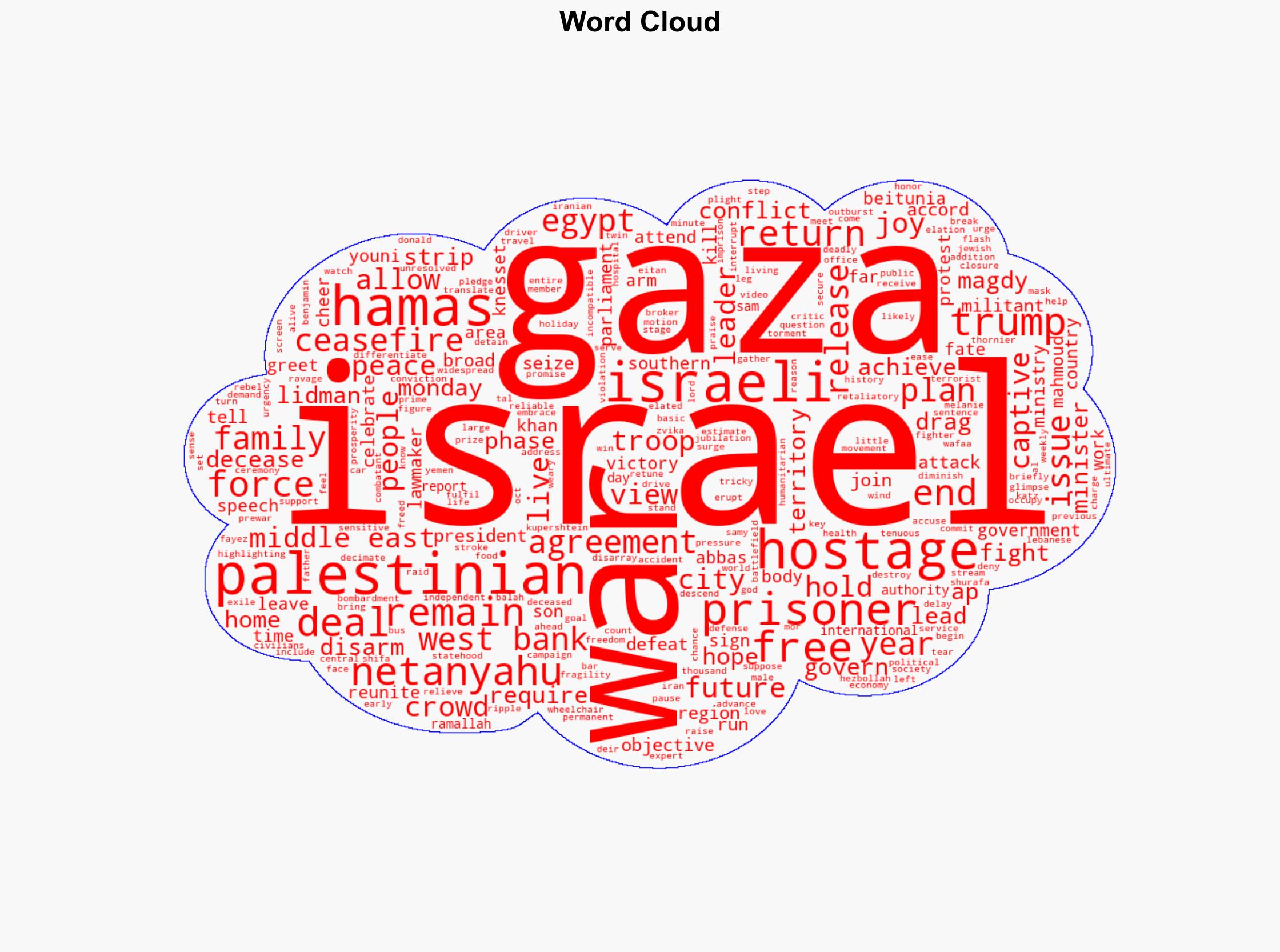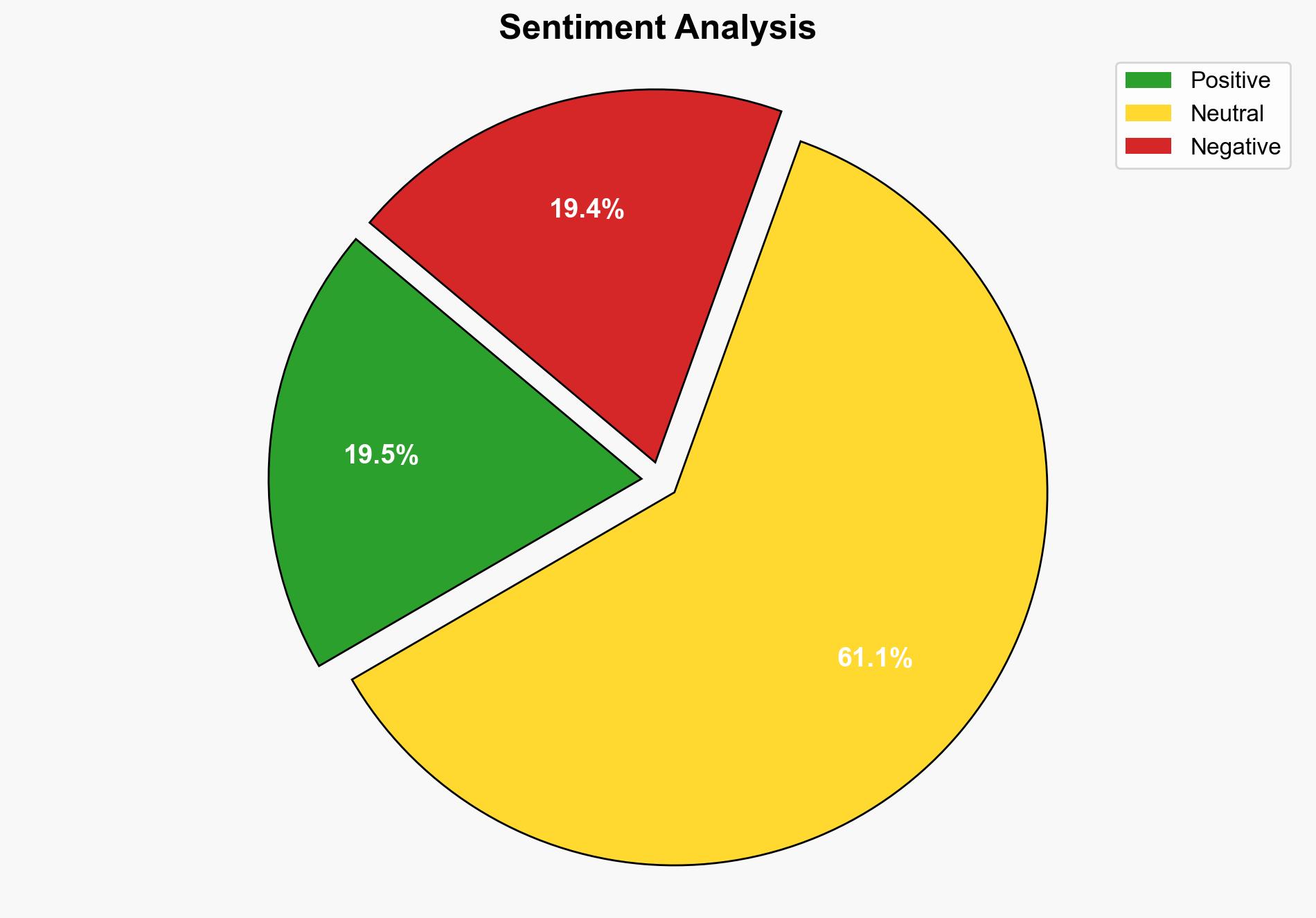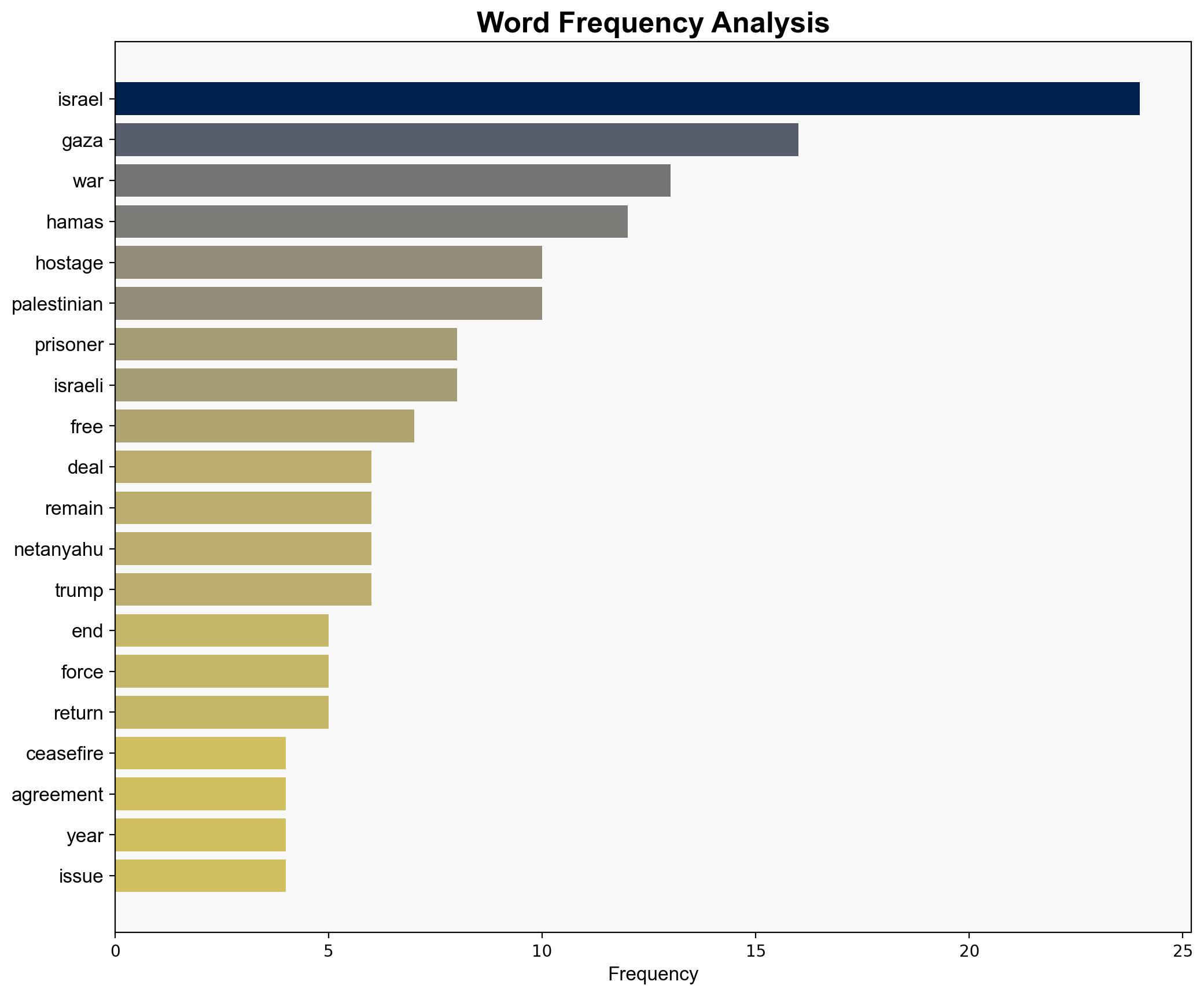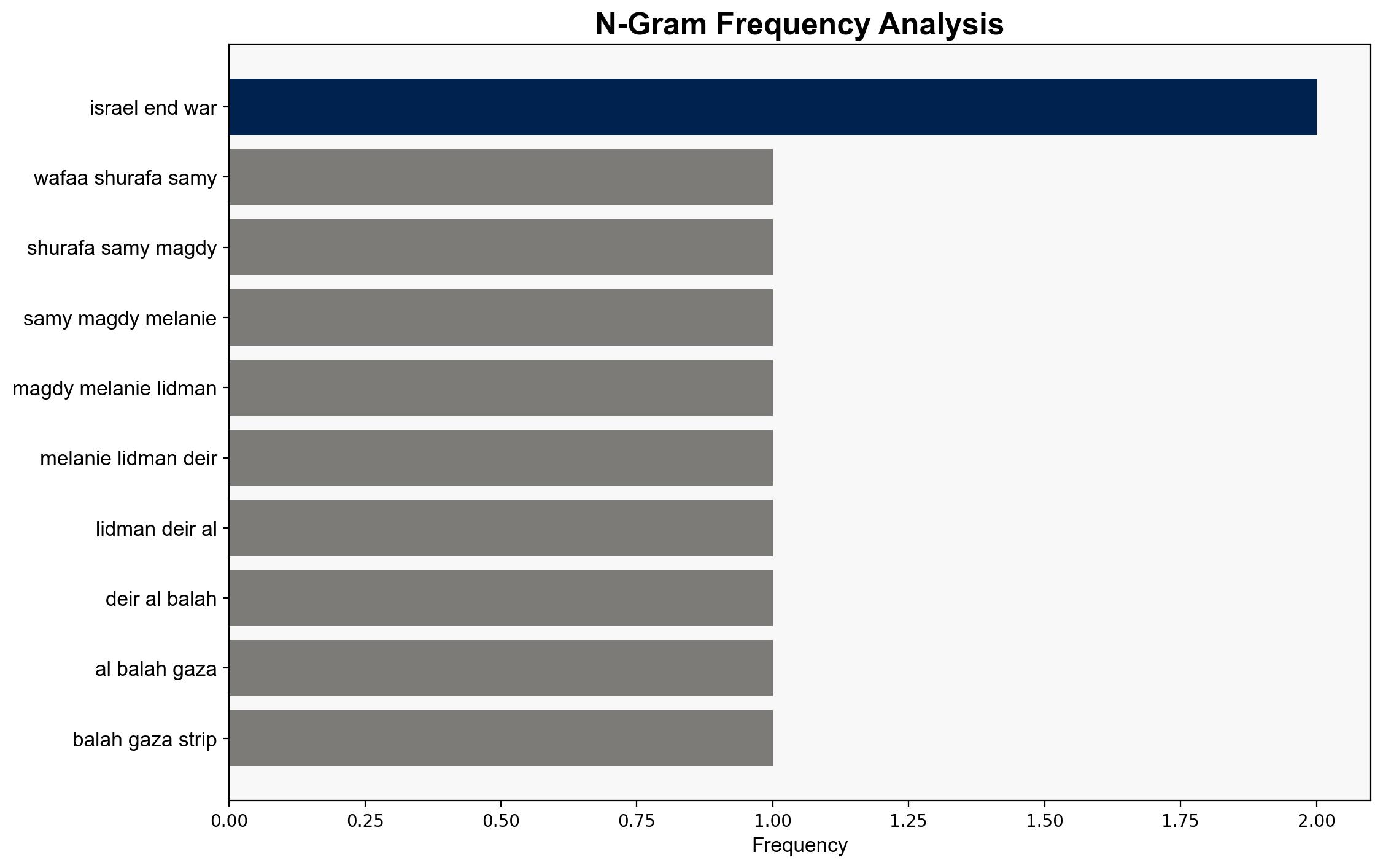Israel takes over 13 more hostages released by Hamas as part of the Gaza ceasefire deal – Boston Herald
Published on: 2025-10-13
Intelligence Report: Israel takes over 13 more hostages released by Hamas as part of the Gaza ceasefire deal – Boston Herald
1. BLUF (Bottom Line Up Front)
The release of hostages by Hamas and the subsequent actions by Israel are part of a fragile ceasefire agreement that could either lead to a more stable peace or reignite conflict. The most supported hypothesis suggests that the ceasefire is a tactical pause rather than a step towards lasting peace. Confidence level: Moderate. Recommended action: Monitor the situation closely for signs of ceasefire violations and prepare contingency plans for potential escalation.
2. Competing Hypotheses
1. **Hypothesis A**: The ceasefire and hostage release are genuine steps towards a long-term peace agreement. This hypothesis is supported by the involvement of international mediators and the mutual benefits of de-escalation for both parties.
2. **Hypothesis B**: The ceasefire is a temporary tactical maneuver by both Israel and Hamas, with no genuine commitment to resolving underlying issues. This hypothesis is supported by the unresolved questions of Hamas disarmament and Palestinian statehood, as well as ongoing military posturing by both sides.
Using ACH 2.0, Hypothesis B is better supported due to the lack of resolution on key issues and historical patterns of temporary ceasefires followed by renewed conflict.
3. Key Assumptions and Red Flags
– **Assumptions**: Both hypotheses assume that external pressures (e.g., international diplomacy) will influence the actions of Israel and Hamas. Hypothesis A assumes a higher level of international influence than may be realistic.
– **Red Flags**: The absence of concrete steps towards addressing disarmament and statehood suggests potential deception or lack of commitment to peace.
– **Blind Spots**: The role of other regional actors, such as Hezbollah and Iran, is not fully considered in the current intelligence.
4. Implications and Strategic Risks
– **Patterns**: Historical patterns suggest ceasefires in the region are often temporary and followed by renewed hostilities.
– **Cascading Threats**: A breakdown in the ceasefire could lead to broader regional instability, involving actors like Hezbollah or triggering proxy conflicts.
– **Geopolitical Risks**: The involvement of international mediators could be undermined if the ceasefire fails, reducing diplomatic leverage in the region.
5. Recommendations and Outlook
- **Mitigation**: Strengthen diplomatic channels with key regional players to support the ceasefire and address unresolved issues.
- **Exploitation**: Leverage international forums to increase pressure on both parties for a more comprehensive peace agreement.
- **Scenario Projections**:
– **Best Case**: Ceasefire holds, leading to negotiations on disarmament and statehood.
– **Worst Case**: Ceasefire collapses, leading to renewed conflict and regional destabilization.
– **Most Likely**: Temporary stability with sporadic violations and no progress on core issues.
6. Key Individuals and Entities
– Benjamin Netanyahu
– Donald Trump
– Zvika Mor
– Eitan Mor
– Tal Kupershtein
– Mahmoud Fayez
7. Thematic Tags
national security threats, counter-terrorism, regional focus





